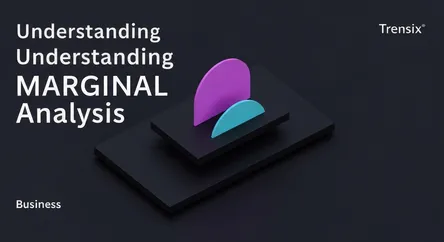Business
Understanding Marginal Analysis

Discover marginal analysis, the economic tool for examining costs and benefits of incremental changes to make optimal business decisions.
What is it?
Marginal analysis is a core concept in economics that examines the additional benefits of an activity versus the additional costs incurred by that same activity. It's the process of making decisions by thinking “at the margin.” Instead of evaluating a decision in its entirety, it focuses on the impact of the next single step. For instance, a business uses it not to decide if they should be in business, but whether producing one more unit of a product is profitable. This method allows for more rational and efficient decision-making by breaking down choices into their incremental components.
Why is it trending?
In today's dynamic markets, optimizing resource allocation is critical for survival and growth. Marginal analysis is trending because it provides a precise framework for maximizing profit and efficiency. Companies constantly use this principle to determine optimal production levels, set product prices, and allocate marketing budgets. By comparing the marginal revenue gained from one more sale against its marginal cost, a firm can identify its most profitable course of action. It's a foundational tool for data-driven strategies, helping businesses adapt quickly to changing economic conditions and competitive pressures.
How does it affect people?
Marginal analysis affects everyone, from corporate executives to individual consumers. For a business, it guides hiring decisions; a company will only hire a new employee if their expected contribution outweighs their salary. For individuals, it's the subconscious thought process behind deciding whether to buy another cup of coffee or work an extra hour. Is the benefit of one more unit of something worth its cost? This principle helps people and organizations make better choices by systematically weighing the incremental benefits against the incremental costs, ultimately leading to a more efficient allocation of personal or company resources.